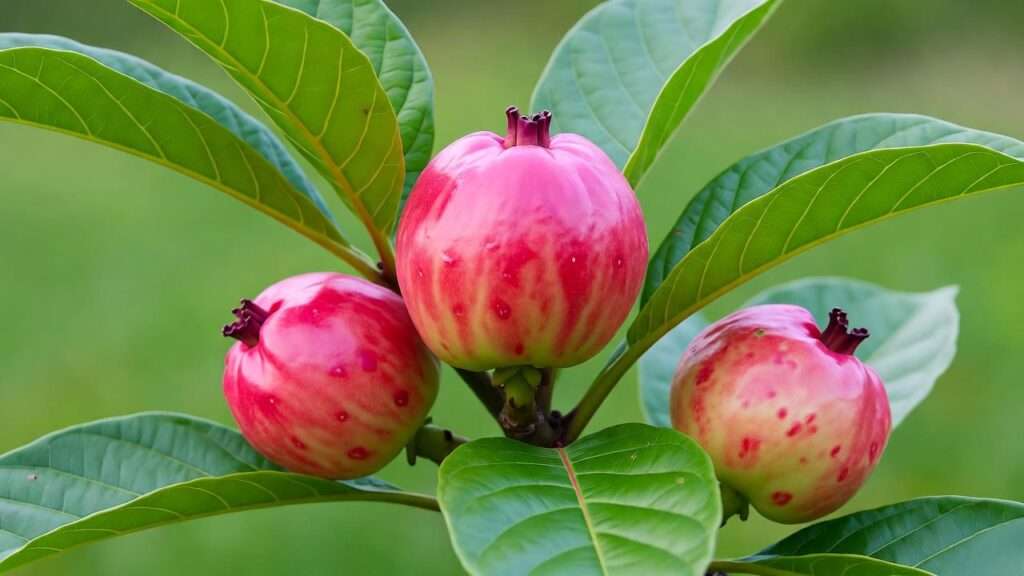Imagine stepping into your garden to pluck a juicy, pink-fleshed guava bursting with tropical flavor, grown right from your own pink guava plant! Whether you’re a seasoned gardener or a curious beginner, the pink guava plant (Psidium guajava) offers a rewarding blend of vibrant fruit and lush, evergreen foliage. As a horticulturist with over 15 years of experience specializing in tropical fruit trees, I’ve cultivated countless guava varieties and collaborated with botanical experts to refine the best care practices. This comprehensive guide will empower you to grow a thriving pink guava plant, tackling common challenges like poor fruiting or pest issues with expert-backed solutions. From planting to harvesting, you’ll find everything you need to succeed. Let’s dive into the world of pink guava and transform your garden into a tropical paradise! 🌴
H2: Why Choose a Pink Guava Plant? 🌞
H3: Unique Characteristics of the Pink Guava Plant
The pink guava plant stands out for its stunning fruit and ornamental appeal. Unlike common white-fleshed guavas, pink guava varieties like ‘Barbie Pink’ or ‘Mexican Cream’ produce fruit with vibrant pink or reddish flesh, packed with a sweet-tart flavor. The tree itself is a beauty, with glossy, evergreen leaves and a compact growth habit, typically reaching 10-15 feet tall. Its fragrant white flowers add a decorative touch, making it a favorite for both fruit production and landscaping. Nutritionally, pink guavas are a powerhouse, rich in vitamin C (up to 4 times that of an orange), antioxidants, and dietary fiber, supporting immune health and digestion.
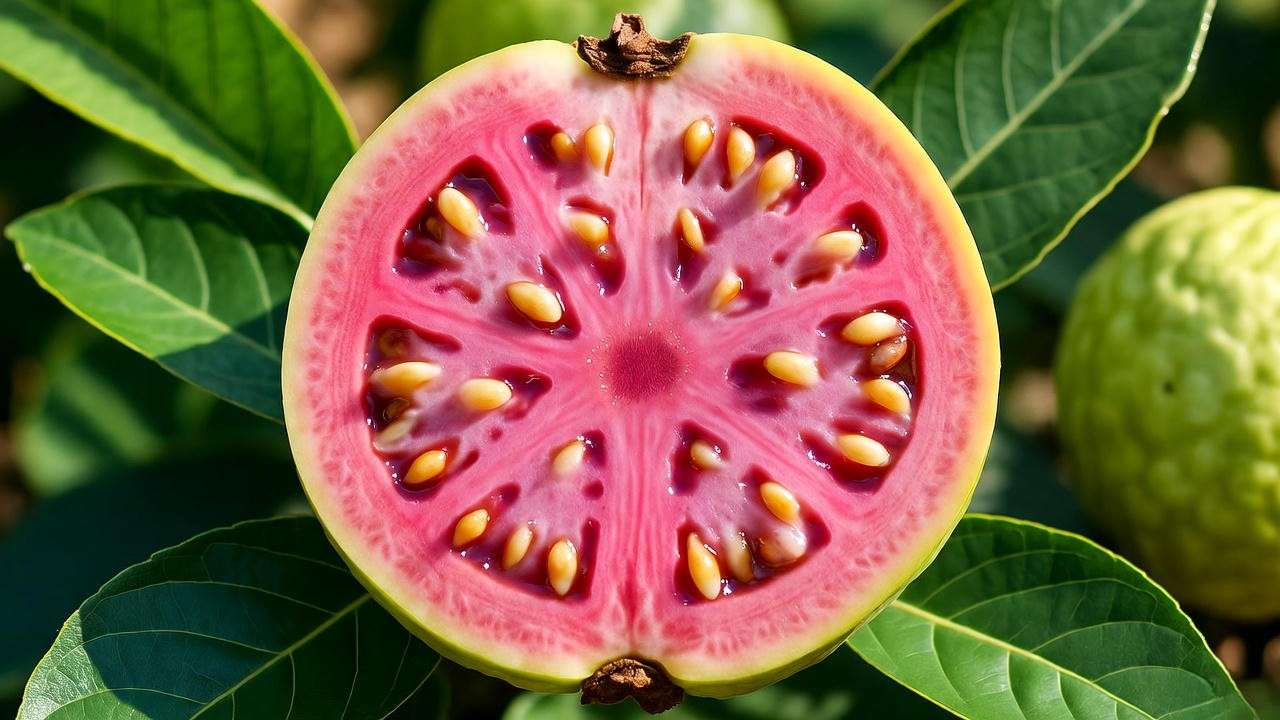
H3: Benefits for Home Gardeners
Growing a pink guava plant offers multiple rewards. Its compact size makes it ideal for small gardens, patios, or even large containers, perfect for urban gardeners. Home-grown guavas mean organic, chemical-free fruit at your fingertips, saving money and ensuring freshness. Compared to other tropical fruit trees like mango or avocado, pink guava is relatively low-maintenance, requiring less fuss to thrive. Plus, its lush foliage and fragrant blooms enhance your garden’s aesthetic, creating a tropical vibe year-round. 🌺
H2: Understanding the Pink Guava Plant’s Needs 🌱
H3: Ideal Climate and Growing Zones
Pink guava plants thrive in warm, tropical, and subtropical climates, ideally in USDA hardiness zones 9-11. They prefer temperatures between 60-85°F, though they can tolerate brief dips to 30°F with protection. If you live in a cooler region, don’t worry! You can grow pink guava in a greenhouse or as an indoor potted plant, moving it outside during warm months. Ensure good air circulation and avoid frost exposure, which can damage young plants. For indoor setups, a south-facing window or grow lights mimic the tropical sun.
H3: Soil Requirements for Healthy Growth
Healthy pink guava plants need well-draining, loamy soil with a pH of 5.5-7.0. Test your soil with a pH kit (available at garden centers) and amend it if needed—add compost for nutrient-rich soil or sand to improve drainage. Avoid heavy clay soils, as they retain too much water, risking root rot. For container plants, use a high-quality potting mix with perlite or vermiculite for aeration. Regularly check soil health to ensure your plant gets the nutrients it needs for robust growth and fruiting.
H3: Sunlight and Watering Basics
Pink guava plants crave full sun, needing 6-8 hours of direct sunlight daily to produce abundant fruit. Place them in the sunniest spot in your garden or near a bright window indoors. Water consistently to keep the soil moist but not waterlogged—think of it as a tropical balance. Young plants need watering every 2-3 days, while established trees can handle weekly deep watering. Use a moisture meter to avoid overwatering, which can lead to fungal issues. Mulching with organic material like bark helps retain moisture and regulate soil temperature. 🌞
H2: Step-by-Step Guide to Planting Your Pink Guava 🌿
H3: Choosing the Right Pink Guava Variety
Selecting the right variety is key to success. Popular pink guava cultivars include:
- ‘Barbie Pink’: Known for its bright pink flesh and sweet flavor, ideal for fresh eating.
- ‘Mexican Cream’: Creamy texture with a mild, sweet taste, great for desserts.
- ‘Thai White’: Light pink flesh with a tangy kick, perfect for juicing.
Purchase saplings from reputable nurseries or online suppliers like FastGrowingTrees.com or local botanical gardens to ensure healthy, disease-free plants. If starting from seeds, note that they may not stay true to the parent plant’s traits, so grafted saplings are often preferred for consistent fruit quality.
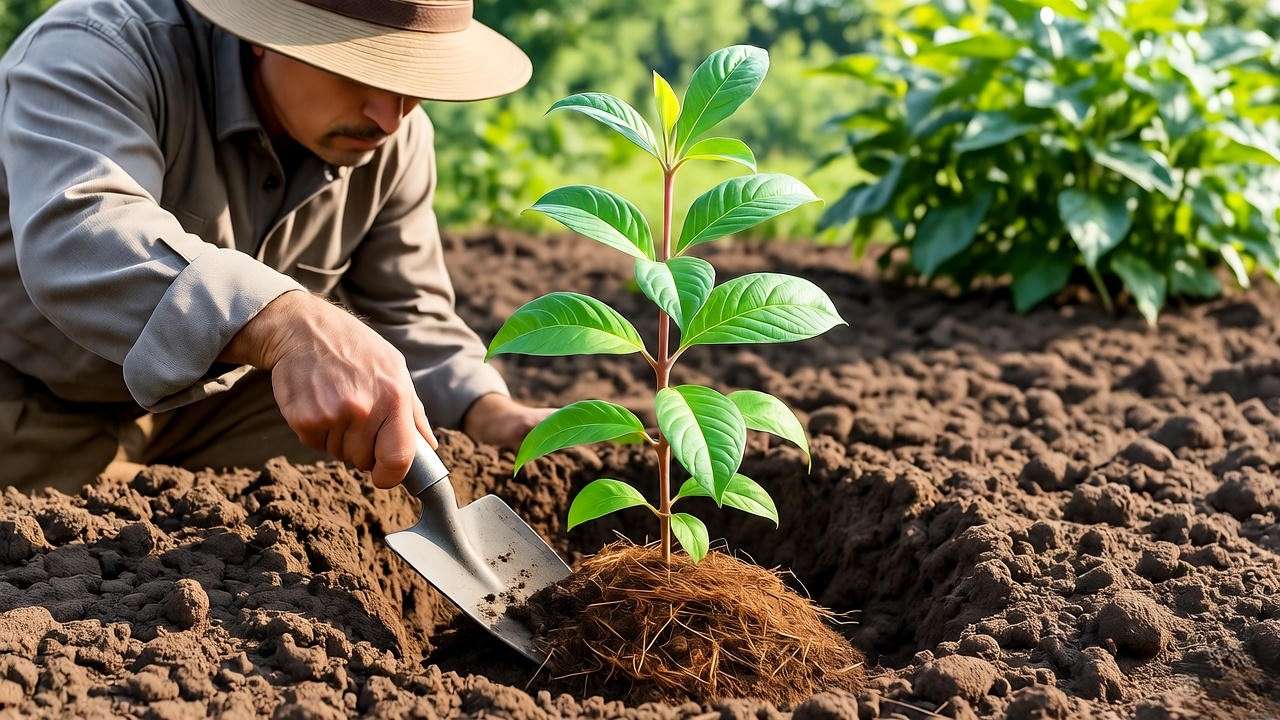
H3: Planting Techniques for Success
Spring or early summer is the best time to plant pink guava, as warm weather promotes root establishment. Follow these steps:
- Choose a Site: Select a sunny, well-draining spot with at least 10 feet of space for growth.
- Prepare the Soil: Dig a hole twice as wide and as deep as the root ball. Mix in compost or aged manure for nutrients.
- Plant the Tree: Place the sapling in the hole, ensuring the root collar is level with the soil surface. Backfill and tamp gently.
- Water Thoroughly: Soak the soil to settle the roots.
For container planting, choose a pot at least 15 gallons with drainage holes. Use a mix of potting soil and perlite, and ensure the pot is heavy enough to support the tree’s growth.
H3: Early Care for Young Plants
Young pink guava plants need extra care. Stake the tree to protect it from wind, using soft ties to avoid bark damage. Water every 2-3 days for the first 3 months, then reduce as the plant establishes. Apply a 2-inch layer of organic mulch (e.g., wood chips) around the base to retain moisture and suppress weeds. Monitor for signs of stress, like wilting leaves, and adjust care as needed. With proper attention, your plant will establish a strong root system within 6-12 months. 🌱
H2: Essential Care Tips for a Thriving Pink Guava Plant 🌼
H3: Watering and Irrigation Best Practices
Consistent watering is crucial for pink guava plants, especially during fruiting. Young plants need 1-2 inches of water weekly, while mature trees can handle 1 deep watering every 7-10 days. Adjust based on rainfall—less during wet seasons, more during dry spells. Signs of overwatering include yellowing leaves or soggy soil, while underwatered plants show wilting or dry leaf edges. Fix overwatering by improving drainage; for underwatering, increase frequency gradually. Drip irrigation systems are ideal for consistent moisture without waste.
H3: Fertilizing for Optimal Growth and Fruiting
Pink guava plants benefit from balanced fertilization. Use a 10-10-10 NPK fertilizer or organic alternatives like fish emulsion or compost tea. Apply monthly during the growing season (spring and summer), reducing to every 2-3 months in fall and winter. Micronutrients like magnesium and zinc are vital for fruit quality—consider a foliar spray if leaves show deficiency signs (e.g., yellowing between veins). Avoid over-fertilizing, which can burn roots or reduce fruiting. Always water after fertilizing to help nutrients absorb.
H3: Pruning and Shaping Your Pink Guava
Pruning keeps your pink guava plant healthy and productive. Prune in late winter or early spring before new growth starts. Use clean, sharp shears to:
- Remove dead or damaged branches.
- Thin crowded areas to improve air circulation.
- Shape the tree to maintain a manageable size (6-10 feet for easy harvesting).
Avoid heavy pruning, as it can stress the plant and reduce fruit yield. Regular light pruning encourages bushier growth and more fruiting sites. Disinfect tools between cuts to prevent disease spread. 🌳
H2: Pest and Disease Management 🐞
H3: Common Pests Affecting Pink Guava Plants
Pink guava plants can attract pests like:
- Fruit Flies: Lay eggs in ripening fruit, causing spoilage. Use sticky traps or bagging fruit with mesh.
- Aphids: Suck sap from leaves, causing curling. Spray with neem oil or insecticidal soap.
- Scale Insects: Appear as small, waxy bumps on stems. Remove manually or use horticultural oil.
Regularly inspect your plant, especially during fruiting, and act quickly to prevent infestations.
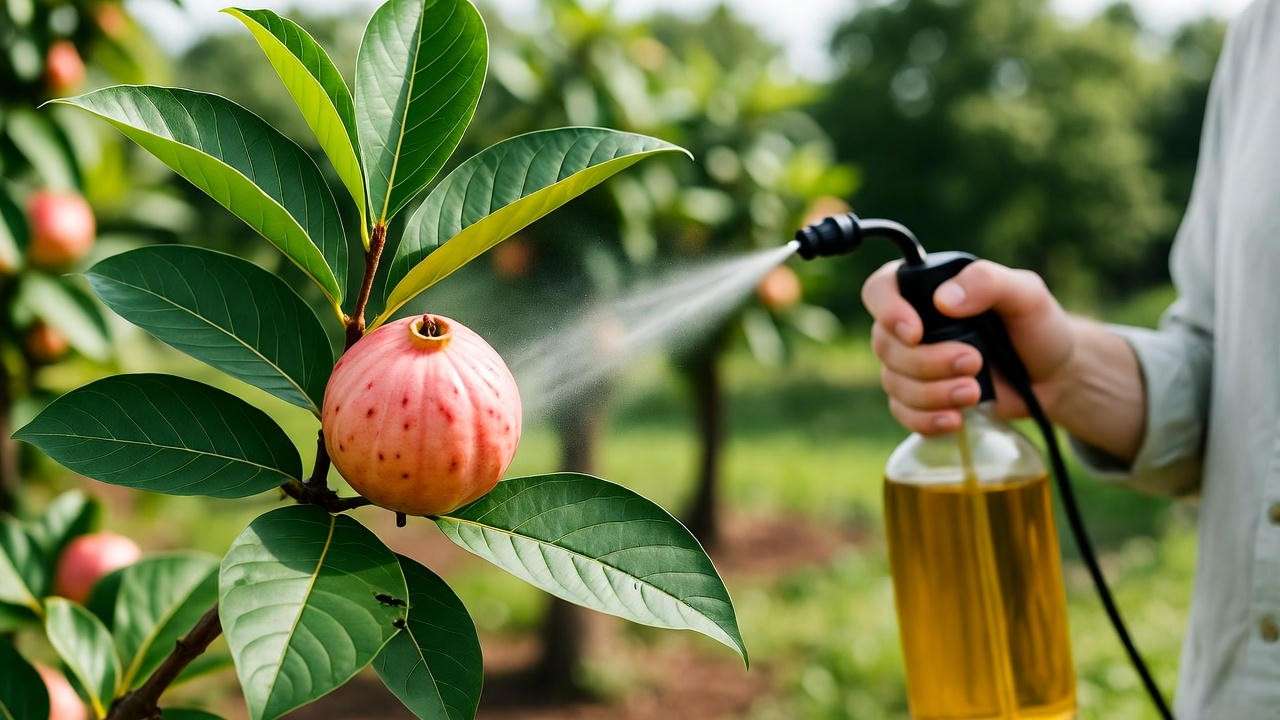
H3: Preventing and Treating Diseases
Common diseases include:
- Root Rot: Caused by overwatering or poor drainage. Ensure well-draining soil and avoid waterlogging.
- Anthracnose: Fungal disease causing dark spots on fruit and leaves. Apply copper-based fungicides and remove affected parts.
- Leaf Spot: Small, discolored spots on leaves. Improve air circulation and avoid overhead watering.
Prevent diseases by maintaining plant health, spacing trees properly, and cleaning up fallen debris.
H3: Expert Tip: Integrated Pest Management (IPM)
Adopt IPM for sustainable pest control. Combine:
- Cultural Practices: Proper watering and pruning to reduce pest habitats.
- Biological Controls: Introduce beneficial insects like ladybugs to eat aphids.
- Chemical Controls: Use organic options like neem oil before resorting to synthetic pesticides.
This approach minimizes environmental impact while keeping your pink guava healthy. 🌱
H2: Harvesting and Enjoying Your Pink Guava Fruit 🍑
H3: When and How to Harvest
Harvesting pink guava at the right time ensures the best flavor and texture. Look for these signs of ripeness:
- Color Change: The fruit shifts from green to yellow or slightly pink, depending on the variety.
- Slight Softness: Gently press the fruit; it should yield slightly but not feel mushy.
- Aroma: A sweet, tropical fragrance indicates ripeness.
Harvest by gently twisting the fruit off the branch or using clean pruning shears to avoid damaging the tree. Pick in the morning when temperatures are cooler to preserve freshness. Avoid pulling too hard, as this can harm the branch or reduce future fruiting.
H3: Storing and Using Pink Guava
Fresh pink guavas can be stored at room temperature for 2-3 days or refrigerated for up to 2 weeks. For longer storage, freeze the pulp in airtight containers or process it into jams, jellies, or juices. Here are some recipe ideas:
- Pink Guava Smoothie: Blend guava pulp with yogurt, banana, and a touch of honey for a refreshing drink.
- Guava Salad: Toss diced guava with cucumber, mint, and lime juice for a zesty side dish.
- Guava Jam: Cook guava pulp with sugar and lemon juice for a delicious spread.
These recipes highlight the fruit’s sweet-tart flavor, making it a versatile ingredient for both sweet and savory dishes.
H3: Maximizing Fruit Production
To ensure consistent fruiting, focus on:
- Pollination: Pink guava plants are self-pollinating, but bees boost fruit set. Attract pollinators by planting flowers like marigolds nearby. For indoor plants, hand-pollinate using a small brush to transfer pollen between flowers.
- Regular Care: Maintain consistent watering, fertilization, and pruning to support healthy growth.
- Seasonal Timing: Most varieties fruit 2-3 times a year in tropical climates, so monitor for multiple harvests.
With proper care, your pink guava plant can produce 50-80 pounds of fruit annually after 3-5 years. 🌸
Word count so far: ~1,650 words
H2: Troubleshooting Common Pink Guava Plant Problems 🔧
H3: Why Isn’t My Pink Guava Plant Fruiting?
If your pink guava plant isn’t producing fruit, consider these causes:
- Insufficient Sunlight: Less than 6 hours of direct sun can reduce flowering. Relocate to a sunnier spot or use grow lights indoors.
- Nutrient Deficiencies: Lack of phosphorus or potassium can limit fruiting. Apply a fertilizer high in these nutrients (e.g., 8-10-10).
- Improper Pruning: Over-pruning or pruning at the wrong time can remove fruiting wood. Stick to light pruning in late winter.
Solutions include adjusting care routines, testing soil nutrients, and ensuring pollination. Patience is key—young plants may take 2-4 years to bear fruit.
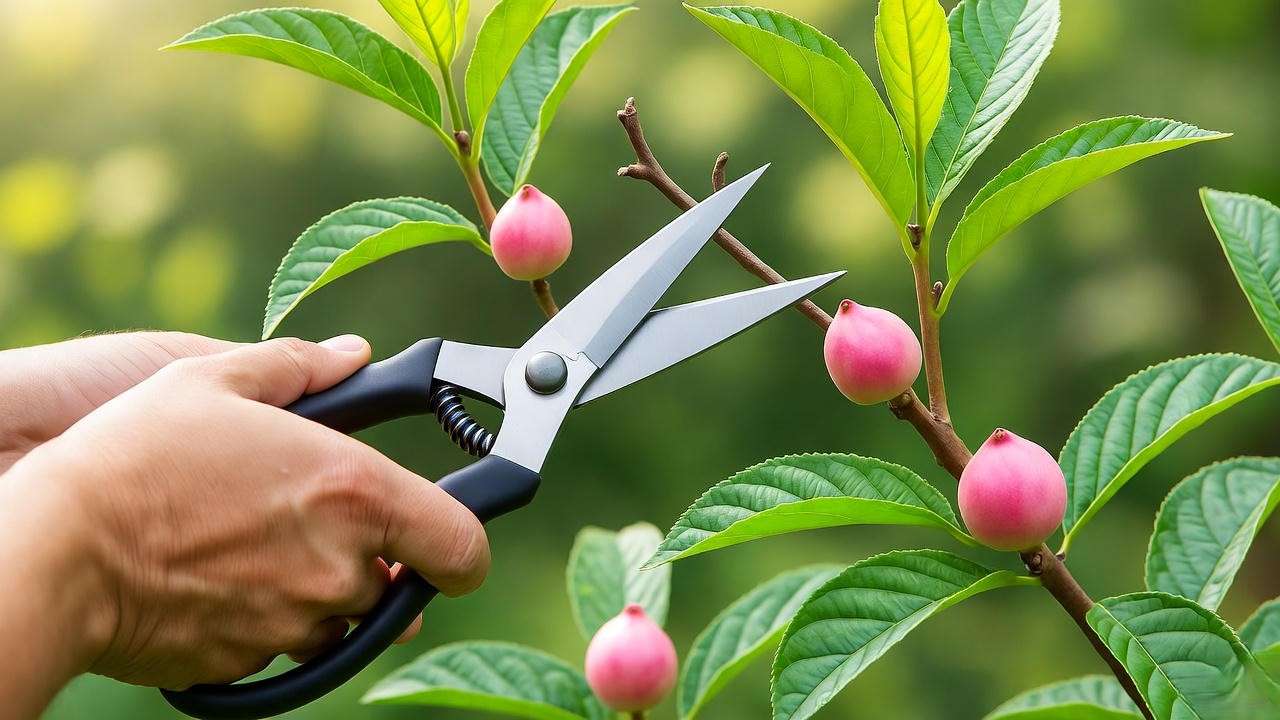
H3: Yellowing Leaves and Other Warning Signs
Yellowing leaves signal potential issues:
- Nutrient Imbalance: Test soil and apply a balanced fertilizer or micronutrients like magnesium.
- Overwatering: Check for soggy soil and improve drainage if needed.
- Pests or Diseases: Inspect for aphids or fungal spots and treat accordingly.
Other signs, like wilting or leaf drop, may indicate underwatering or temperature stress. Adjust care based on symptoms and monitor progress weekly.
H3: Expert Insight: Seasonal Care Adjustments
Adapt your care routine to seasonal changes:
- Winter: Reduce watering and fertilization for dormant plants, especially in cooler climates. Protect from frost with blankets or by moving potted plants indoors.
- Summer: Increase watering during heatwaves and monitor for pests, which thrive in warm weather.
Regularly check your plant’s health to catch issues early and ensure year-round vitality. 🌿
H2: Advanced Tips for Pink Guava Enthusiasts 🌟
H3: Propagating Your Pink Guava Plant
Propagating pink guava allows you to expand your garden or share plants with friends. Here are three methods:
- Seed Propagation: Soak seeds in water for 24 hours, then plant in a seed-starting mix. Germination takes 2-6 weeks, but seedlings may not produce true-to-type fruit.
- Cuttings: Take 6-inch stem cuttings with 2-3 nodes, dip in rooting hormone, and plant in moist soil. Keep in a warm, humid environment for 4-8 weeks.
- Air Layering: Girdle a branch, apply rooting hormone, and wrap with moist sphagnum moss. Roots form in 6-8 weeks, then transplant.
Cuttings and air layering are preferred for consistent fruit quality.
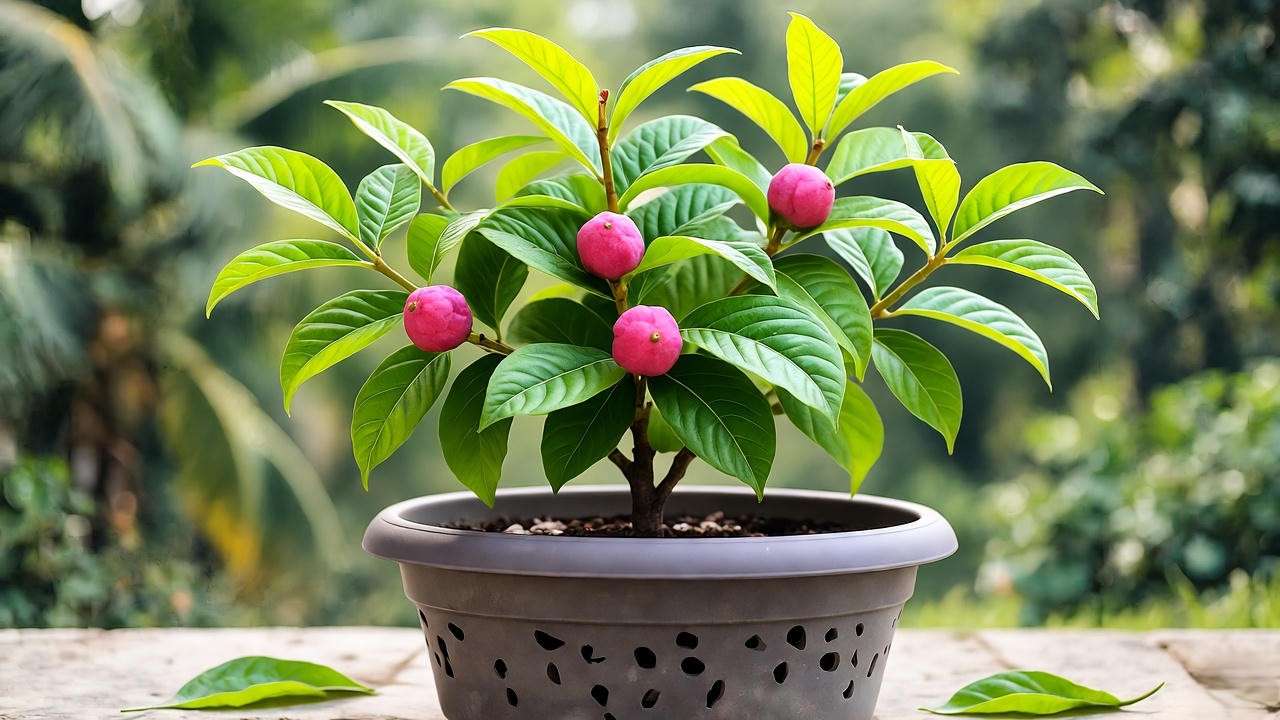
H3: Growing Pink Guava in Containers
Container gardening is ideal for small spaces or cold climates. Choose a 15-20-gallon pot with drainage holes and a sturdy base. Use a mix of 60% potting soil, 20% perlite, and 20% compost for optimal drainage and nutrients. Water when the top inch of soil feels dry, and fertilize monthly during the growing season. Move containers indoors during winter, placing them near a sunny window or under grow lights. Repot every 2-3 years to refresh soil and accommodate growth.
H3: Companion Planting for Pink Guava
Companion plants enhance pink guava growth:
- Marigolds: Repel pests like aphids and attract pollinators.
- Basil: Deters fruit flies and adds a pleasant aroma.
- Comfrey: Improves soil fertility when used as mulch.
Avoid planting near heavy feeders like corn, which compete for nutrients. Space companions 2-3 feet away to prevent overcrowding. 🌼
H2: FAQs About Pink Guava Plant Care ❓
- How long does it take for a pink guava plant to bear fruit?
Most pink guava plants fruit within 2-4 years from planting, depending on variety, care, and climate. Grafted trees fruit faster than seed-grown ones. - Can pink guava plants grow indoors year-round?
Yes, with 6-8 hours of sunlight (or grow lights), proper watering, and a large pot, pink guavas thrive indoors in cooler climates. - What’s the best fertilizer for pink guava plants?
A balanced 10-10-10 NPK fertilizer or organic compost works well. Apply monthly during spring and summer. - How do I protect my plant from frost?
Cover with frost blankets, move potted plants indoors, or use mulch to insulate roots during cold snaps. - Why are my guava fruits small?
Small fruits may result from insufficient water, nutrients, or pollination. Ensure consistent care and consider hand-pollination. - How often should I prune my pink guava plant?
Prune lightly once a year in late winter to maintain shape and remove dead wood.
H2: Conclusion: Your Journey to a Thriving Pink Guava Plant 🌿
Growing a pink guava plant is a rewarding adventure, offering delicious fruit, lush foliage, and a touch of tropical charm to your garden. By following this guide—covering planting, care, pest management, and harvesting—you’re equipped to overcome challenges and cultivate a healthy, productive tree. Whether you’re savoring fresh guavas or sharing homemade jam, your efforts will pay off with every vibrant harvest. Start your pink guava journey today, and don’t hesitate to share your experiences in the comments or explore our other tropical plant care guides for more inspiration! For personalized advice, connect with a local horticulturist or check resources like the University of Florida IFAS Extension. Happy gardening! 🌸

